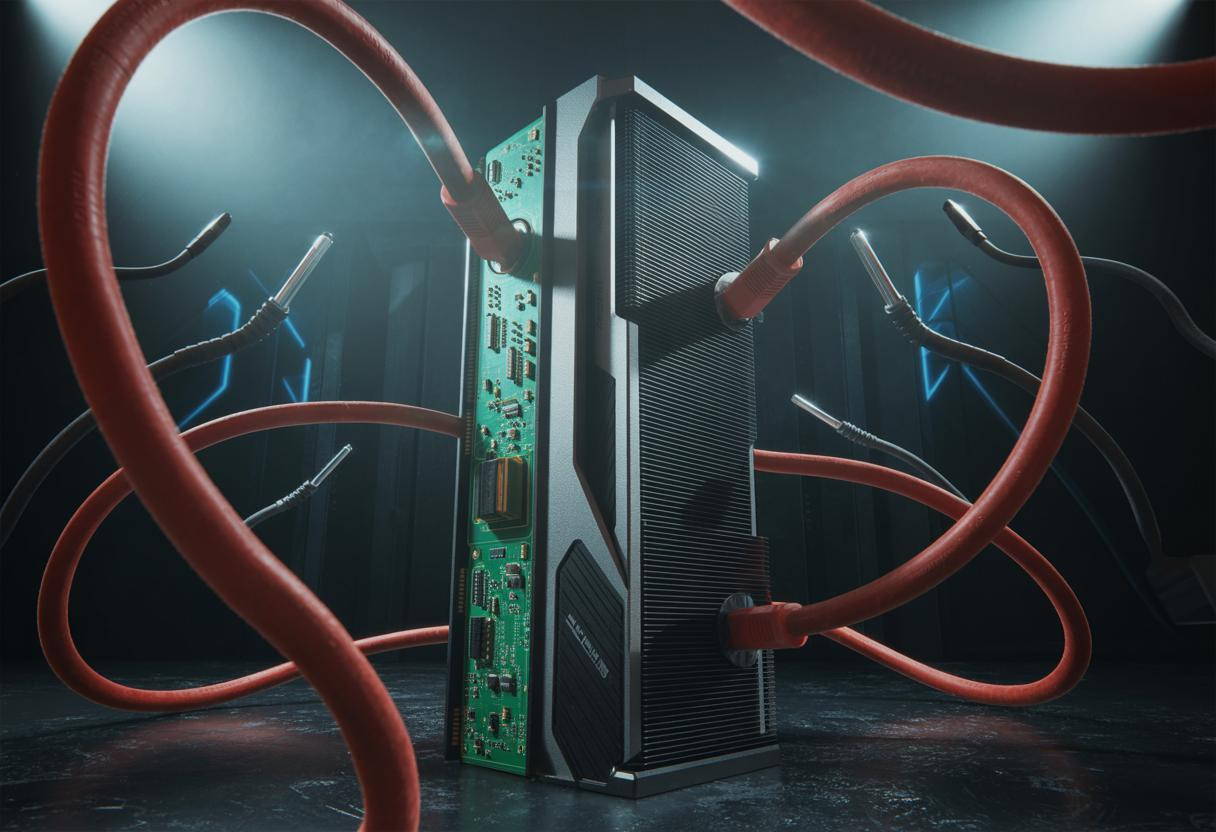The NVIDIA RTX 5090’s $1,999 price tag isn’t just another graphics card launch—it’s a seismic shift that reveals how AI workloads are completely reshaping what consumers expect from their hardware. With 3,352 AI TOPS and 32GB of lightning-fast GDDR7 memory, this powerhouse delivers performance gains that go far beyond traditional gaming benchmarks.
The technical reality behind the revolutionary claims
Unlike typical GPU launches focused purely on frame rates, the RTX 5090 prioritizes AI acceleration capabilities that dwarf its gaming improvements. Real-world testing shows 28-36% performance gains in 4K gaming over the RTX 4090, but the AI workload improvements tell a dramatically different story.
The 5th-generation Tensor cores deliver 29% better LLM performance compared to previous generations, while FP8 operations run over 4x faster than the RTX 4090. For professionals running AI inference or training models, these aren’t incremental improvements—they’re workflow transformations.
However, the 575W power consumption and brief spikes up to 901W create a hidden challenge. Most users will need PSU upgrades exceeding $200, making the real investment closer to $2,200 for a complete system upgrade.
Why the pricing strategy reveals market evolution
The premium positioning makes strategic sense
At 25% more expensive than the RTX 4090, the pricing initially seems steep for a 27% rasterization improvement. But NVIDIA understands something crucial: their target audience has fundamentally changed. This isn’t primarily a gaming card—it’s a professional tool disguised as consumer hardware.
Content creators see 126% faster video decoding, while AI researchers benefit from multi-frame generation technology that can quadruple frame rates in supported applications. The 32GB VRAM capacity alone justifies the cost for professionals working with large datasets or high-resolution content.
Supply constraints reveal demand patterns
Initial launch shortages and scalping incidents demonstrate that despite the high price, demand from AI professionals and content creators far exceeds traditional gaming enthusiast interest. This shift parallels broader market trends where AI capabilities increasingly drive purchasing decisions.
The consumer psychology behind the investment
Traditional gamers face a challenging value proposition. The RTX 5090 requires not just the initial $1,999 investment, but potentially $300-500 in additional PSU and cooling upgrades. For pure 1440p or 4K gaming, the performance gains rarely justify this total system cost.
However, the psychological appeal of “future-proofing” drives many purchases. Users recognize that AI integration in games, creative software, and productivity tools will only accelerate. The RTX 5090 positions early adopters ahead of this curve.
Similar to how strategic home upgrades can increase property value overnight, investing in cutting-edge AI capabilities may prove prescient as software evolves to leverage these features.
Practical implications for different user types
Content creators and professionals
For video editors, 3D artists, and AI researchers, the RTX 5090 delivers immediate workflow improvements. The 32GB VRAM eliminates memory bottlenecks that plague creative professionals, while FP8 optimizations accelerate rendering and inference tasks that previously required cloud computing resources.
Gaming enthusiasts and early adopters
VR enthusiasts and users with high-refresh 4K displays see the most gaming benefits. The multi-frame generation technology and enhanced ray tracing capabilities provide smoother experiences in demanding titles, though the cost-per-frame improvement remains steep.
Interestingly, while competitors like AMD are making significant AI performance strides, NVIDIA’s ecosystem advantages and software optimization maintain their market leadership position.
What this launch signals about technology’s direction
The RTX 5090 represents a clear inflection point where AI capabilities become the primary differentiator in high-end computing hardware. Just as mobile phones evolved beyond communication devices, graphics cards are evolving beyond gaming into general-purpose AI accelerators.
This shift suggests that future hardware purchases will increasingly center on AI performance rather than traditional benchmarks. The RTX 5090’s success or failure will likely determine whether other manufacturers follow this AI-first approach or maintain focus on conventional gaming performance metrics.
